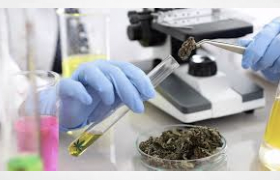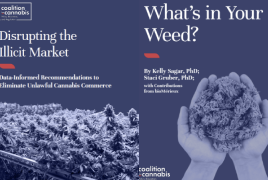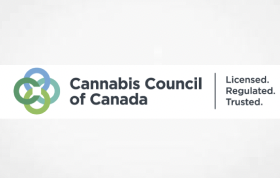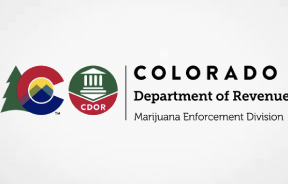LCGC International
Interview
Zachariah Hildenbrand is the chief science officer of Infinity Water Solutions and Partner of Medusa Analytical.
What are the biggest challenges that you’re seeing right now when it comes to testing cannabis pro
Calls to legalize marijuana are increasing around the world.
Earlier this month, Germany became the third country in the European Union (EU) to legalize marijuana for personal use. In the United States, 24 states have legalized cannabis for recreational use, and more are expected to follow suit.
While cannabis is becoming more widely used, researchers face regulatory and technical challenges with its analysis. LCGC International sat down with Zachariah Hildenbrand, chief science officer of Infinity Water Solutions and Partner of Medusa Analytical, to discuss the latest trends and challenges in cannabis analysis.
How regulated is cannabis in terms of DEA approvals or FDA involvement? Does this impact scientists’ access to cannabis materials?
Cannabis/hemp is still a Schedule I narcotic at the federal level. This has hindered research considerably as groups like mine cannot gain access to viable testing material without having a U.S. Drug Enforcement Administration (DEA) license, which is difficult to attain. We have used low tetrahydrocannabinol (THC) hemp (<0.3 % w/w total THC) as a surrogate for our analyses; however, these genetics do not express the same phytochemicals as high-THC cannabis, and thus we are missing an opportunity for more robust chemical characterization.
What are the biggest challenges that you’re seeing right now when it comes to testing cannabis products? Are they technical or regulatory?
There are both technical and regulatory challenges. On the technical front, I believe that there is a significant dearth of technical expertise in the commercial laboratory setting, which is evident in the lack of proper QA/QC. From a regulatory perspective, the testing requirements are rapidly evolving; however, some appear to be completely out of touch with the current state of the industry. For example, in various jurisdictions, such as California, pesticide analysis requires two very expensive instruments to screen for both volatile and semi-volatile pesticides (highly sensitive GC–MS and LC–MS). A lot of these chemicals aren’t relevant to current cultivation practices and haven’t been used for decades, yet the requirement to test for these potential constituents is a significant financial burden to laboratory operators, which in turn has them cutting costs in other areas of their operations, such as staffing. My recommendation would be for a consortium of cultivation operators to work with commercial laboratories and regulators to provide a more transparent account of what is being used in today’s cultivation setting, which would then result in a more refined panel of analyses being required for compliance.
How does the emergence of new markets for recreational and medicinal use of cannabis impact the analytical testing space? Are contract laboratories emerging to handle the increase in analysis volumes?
This has become a major issue that most commercial laboratories are not handling particularly well. For example, in Oklahoma, one of the jurisdictions that my team operates in, there has been a massive uptick in cultivation activity, which has overrun the labs. What this has revealed is a lack of technical proficiency, particularly with respect to QA/QC efforts. I think that most well-trained technicians can do a good job of overseeing large batch analyses; however, I also believe that they struggle mightily when instruments fall out of calibration or if some degree of troubleshooting is required. Having run commercial laboratories myself, I can attest to the fact that this happens all the time, and especially when you are trying to process as many samples as you can on a daily basis. This is where I see the industry lacking experienced professionals that have the expertise to identify issues within their data as it’s being generated. As a result, cultivation operators are having to manage their operations and distribution using spurious data at times, which is immensely frustrating and challenging. My hope is that as the field of cannabis/hemp analysis continues to gain legitimacy that more traditionally trained analytical chemists will enter the fold and that we’ll have better quality control on commercial testing than we are currently experiencing.
What are the major analytical techniques that you see right now for cannabis analysis?
Currently, HPLC is the standard for cannabinoids given that you can quantify the acidic precursors (that is, THCA, CBDA, and CBCA) without derivatization. HS-GC-FID is used extensively for terpene and residual solvent analysis. GC–MS and LC–MS are used for pesticides analysis of volatile and semi-volatile pesticides, and LC–MS is used for the detection and quantification of mycotoxins. Additionally, ICP-MS is generally the standard for heavy metals analysis. Lastly, a range of techniques are used for microbial testing, including aerobic plate counting and quantitative polymerase chain reaction (qPCR). MALDI-TOF-MS has been used to characterize microbial diversity in water and soils in the cultivation setting, but this has been predominantly an academic pursuit to date.
Are there approved and unapproved analytical methods in use, and which professional organizations are most involved in the approval process for these analytical methods?
This is a great question. Unfortunately, there isn’t a single governing body that is overseeing cannabis/hemp analysis here in the United States. As a result, we have different analytical requirements in different states, which ultimately results in highly variable products being available depending on one’s location. For example, most states allow HS-GC-FID for terpene analysis, which is a more cost-effective analytical tool, whereas others require GC–MS, which is more expensive but provides a much broader scope of analytical capacity. It would behoove the industry to standardize these practices so that product consistency and reliability can be improved for the retail user and more importantly, medical patients.
What new techniques are being explored for analysis and are these likely to be adopted quickly?
In the academic setting we are seeing more advanced untargeted analyses being performed by the likes of Kevin Schug and others. These efforts allow us to explore beyond the scope of commercial testing to potentially identify novel compounds that could represent future drug targets for the biopharmaceutical industry. These analyses are extremely valuable, but they do require an experienced operator and specialized instrumentation. I would love to see more LC–MS QQQ, Q-TOF, and SPE/SFE analyses being performed in commercial labs; however, this is likely cost-prohibitive now. Perhaps as more producers, breeders and geneticists ask for these untargeted analyses to be performed on their plants, it will provide an impetus for laboratories to make the capital expenditures necessary to perform these experiments.
Given the complexity of the cannabis plant (for example, there are over 100 cannabinoids present in the plant), what analytical challenges does this present? How are scientists addressing these challenges right now?
Between the cannabinoids, terpenes, and flavonoids alone there are 1,000s of molecules present in cannabis/hemp. I think one of the biggest challenges is having readily available commercial reference materials (CRMs) or analytical standards to compare to. When I first started in cannabis analysis in 2015, we were able to get CRMs for ~11 cannabinoids and 18 terpenes. This has been expanded upon considerably, but I still think the relative dearth of these standards is a limiting factor in commercial analysis.
What new health-related applications are being explored for cannabis?
With the emergence of vaping products, tinctures, concentrates, and edible products, cannabis/hemp medicine has become more accessible for more populations, especially those who aren’t completely comfortable with smoking flower products. With that being said, I see suppositories having a substantial moment right now as more folks are beginning to acknowledge the value of rectal absorption. Especially for terminally ill patients that are looking to improve their quality of life without experiencing a debilitating psychotropic effect, suppositories allow patients to experience large dose of THC and other psychoactive cannabinoids while circumventing liver metabolism and the conversion of d9-THC into the more psychotropic compounds.
Source:
https://www.chromatographyonline.com/view/emerging-markets-cannabis-testing


















